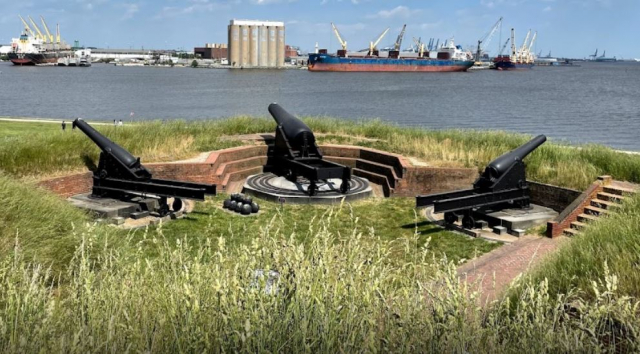The Birthplace of the Star-Spangled Banner: A Visitor's Guide to Fort McHenry
In Baltimore, Maryland, at the mouth of the Inner Harbor on Locust Point, stands Fort McHenry National Monument and Historic Shrine, a site of immense historical significance in the United States. This coastal pentagonal bastion fort is renowned as the birthplace of the U.S. national anthem, "The Star-Spangled Banner." Its successful defense of Baltimore Harbor against the British in 1814 was a pivotal moment in the War of 1812, and today, the fort offers visitors a profound connection to the nation's past.
The Defining Moment: The Battle of Baltimore (1814)
While Fort McHenry's history dates back to 1798, its most famous chapter unfolded during the War of 1812.
- The British Attack: In September 1814, after burning Washington, D.C., the formidable British naval fleet turned its sights on the crucial port of Baltimore. On September 13, they began a massive, 25-hour bombardment of Fort McHenry, the primary defense of the harbor.
- A Steadfast Defense: Commanded by Major George Armistead, the 1,000 American soldiers, sailors, and militia inside the fort withstood the relentless attack. A large chain across the harbor entrance, combined with the fort's resilient defenses, prevented the British from breaching the harbor.
- The Star-Spangled Banner: A young American lawyer named Francis Scott Key watched the entire bombardment from a ship in the harbor. When dawn broke on September 14 and he saw the huge 30-by-42-foot American flag still flying over the fort, he was so moved that he penned the poem "Defence of Fort M'Henry." This poem was later set to music and, in 1931, officially became the U.S. national anthem, "The Star-Spangled Banner."
Fort McHenry's Enduring History:
The fort's service to the nation continued long after the War of 1812.
- Civil War Prison: During the American Civil War, Fort McHenry was used as a military prison, primarily for Confederate soldiers and Southern sympathizers. Over 10,000 prisoners were held there during the war.
- World Wars and Beyond: It served as a massive hospital during World War I and as a U.S. Coast Guard training center during World War II.
Visiting Fort McHenry Today:
As a National Monument and Historic Shrine, Fort McHenry offers a rich and engaging experience for visitors.
- Explore the Fort: You can walk through the historic star-shaped fort, which was constructed in a pentagon style and surrounded by a dry moat. Explore the barracks and see historical exhibits.
- Visitor Center and Film: Begin your visit at the Visitor Center to watch a 10-minute orientation film that provides excellent historical context for the Battle of Baltimore.
- Museum Collection: The fort is home to thousands of artifacts and documents related to its long history.
- Flag Changing Ceremonies: Park rangers often conduct interpretive programs and flag-changing ceremonies that replicate the historic raising of the "Star-Spangled Banner."
- The Francis Scott Key Monument: On the grounds, you can see the ornate sculpture of the Greek mythological figure Orpheus, which was dedicated in memory of Francis Scott Key and the soldiers who defended the fort.
 A visit to Fort McHenry is a journey into a pivotal moment in American history. It is where the nation's anthem was born and where a determined defense saved a major American city. Walking its grounds offers a tangible connection to the past and a deeper appreciation for the flag and the anthem that have come to symbolize the resilience and spirit of the United States. It remains a must-visit destination for anyone interested in the rich history of Baltimore and the nation.
A visit to Fort McHenry is a journey into a pivotal moment in American history. It is where the nation's anthem was born and where a determined defense saved a major American city. Walking its grounds offers a tangible connection to the past and a deeper appreciation for the flag and the anthem that have come to symbolize the resilience and spirit of the United States. It remains a must-visit destination for anyone interested in the rich history of Baltimore and the nation.
Sources:
- National Park Service (Fort McHenry National Monument and Historic Shrine)
- Maryland Historical Society
- The Star-Spangled Banner Flag House (Baltimore)
- Historical accounts of the War of 1812 and the Battle of Baltimore
- Smithsonian Institution (for information on the original Star-Spangled Banner flag)
